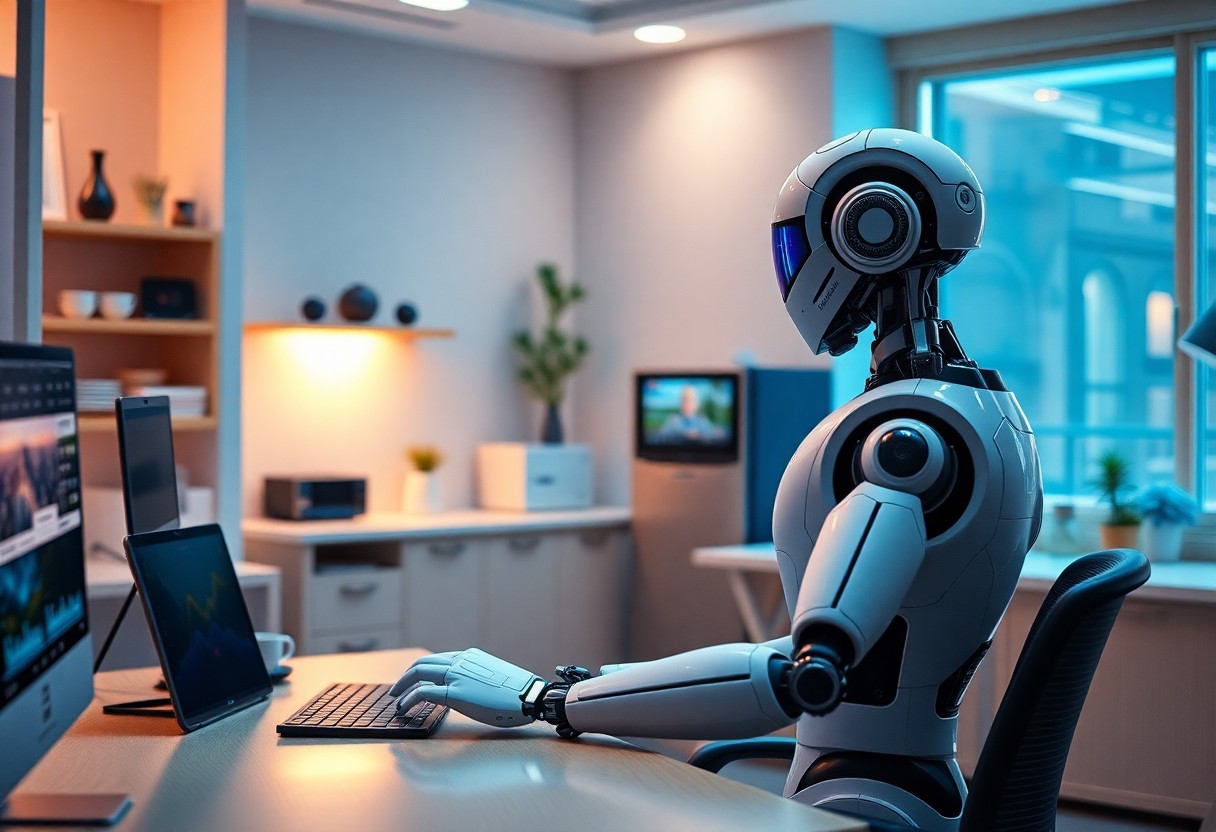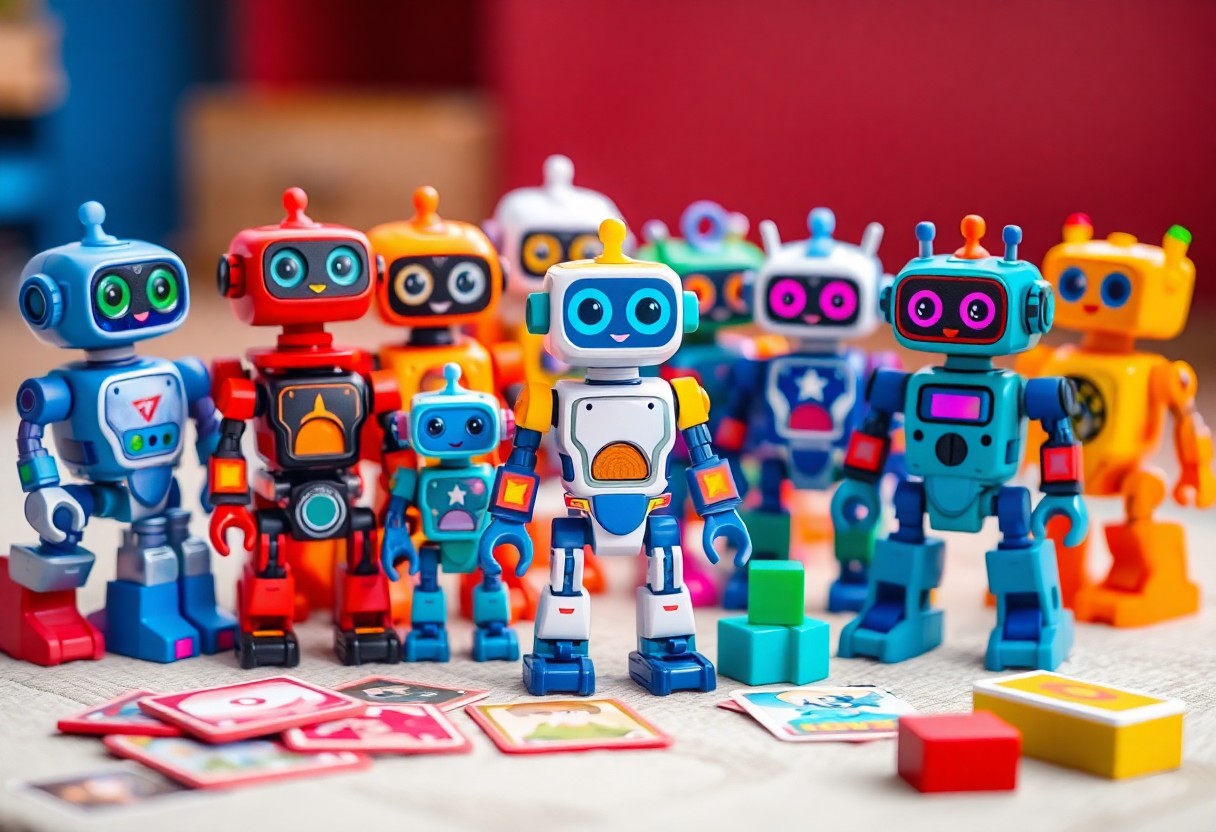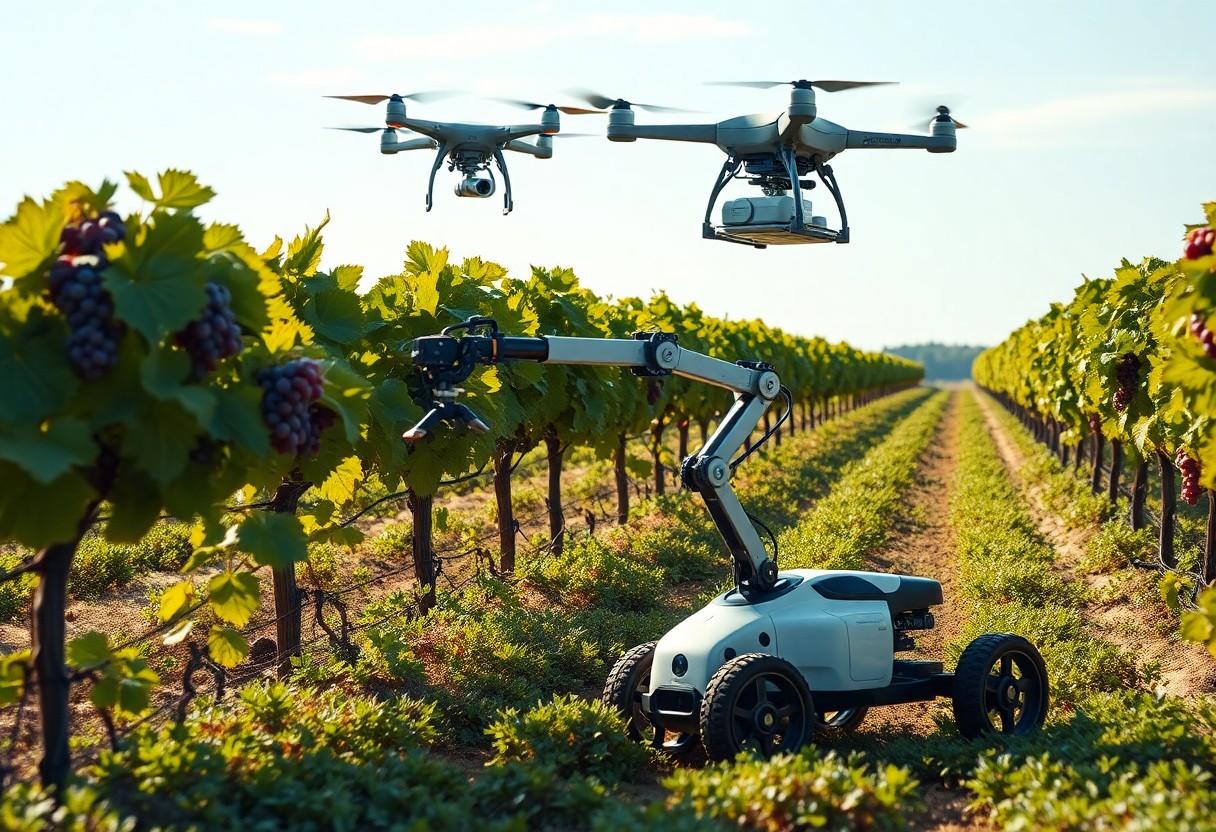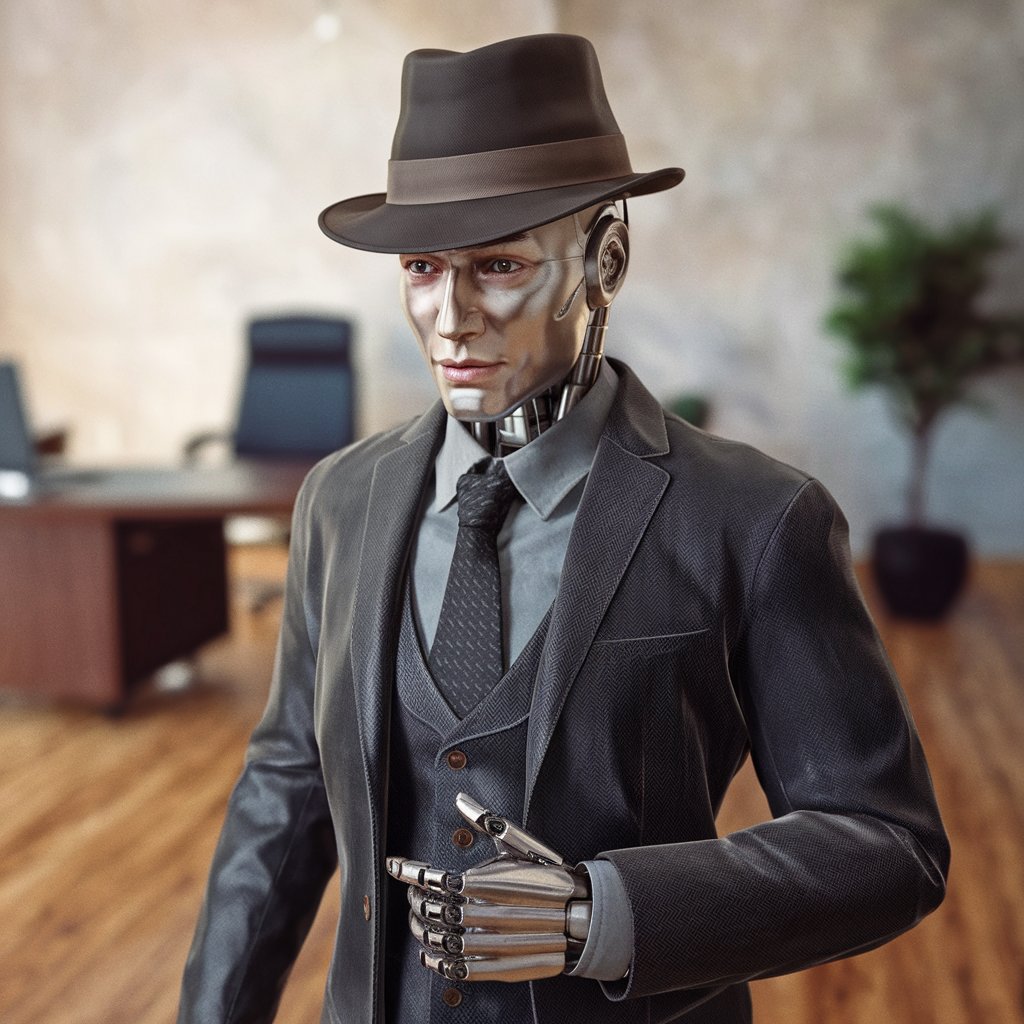It’s imperative to consider how robotics will influence your everyday experiences by 2030. As technology progresses, robots are set to become integral companions in various aspects of your life, from enhancing efficiency at work to taking on household tasks. Imagine a future where robots seamlessly integrate into your routines, improving convenience and safety while also reshaping industries. This exploration will provide insights into the emerging roles of robots and how they will transform the landscape of your daily interactions.
The Robotics Revolution: Trajectory to 2030
By 2030, you’ll witness unprecedented advancements in robotics, shaping how you interact with machines daily. Innovations in artificial intelligence and machine learning will drive robots to perform complex tasks that require adaptability and decision-making abilities. Robotics will become integral in various sectors, enhancing productivity and redefining human roles across industries.
Milestones and Breakthroughs in Robotics Technology
Recent milestones, such as the development of soft robotics and advanced robotic exoskeletons, pave the way for greater human-robot collaboration. Breakthroughs in AI algorithms enable robots to learn from their environments, enhancing their efficiency and problem-solving capabilities. These advancements signal a remarkable shift towards robots functioning not just as tools, but as intelligent partners in your daily life.
Industry Adoption and Economic Implications
The adoption of robotic technologies across various industries is set to transform business models and operational efficiencies. Manufacturing sectors are already leveraging automation to streamline workflows, leading to a projected saving of $4 trillion annually by 2030. As robots become more integrated into service industries such as healthcare and logistics, economic implications will include job restructuring and the emergence of new roles that require collaboration with robotic systems.
The shift towards automation is not just a technological trend; it reflects a fundamental change in your job landscape. For instance, companies implementing robotics in supply chain management report efficiency gains of up to 30%, drastically altering labor requirements. This transformation creates opportunities for you to engage in higher-skilled roles, while simultaneously raising questions about workforce retraining and the future of job security. Embracing lifelong learning and adaptability will be necessary to capitalize on the benefits of this robotic revolution.
Everyday Robotics: A New Home Companion
As robots become integral to daily life, you’ll find them acting as home companions, assisting with tasks and enhancing your living experience. Innovations in robotics will lead to adaptable devices that can monitor your health, assist with daily routines, and provide companionship. These changes are paving the way for a future where these machines seamlessly integrate into your home, making life more convenient and efficient. For insights into how robots contribute to human activities, check out 9 ways robots are helping humans: Robodogs to magnetic ….
Smart Homes and Personal Assistants
Your smart home will transform with robots that function as personal assistants, managing tasks such as scheduling, managing appliances, and providing reminders. These devices will respond to voice commands, adjust your environment to your preferences, and maintain connectivity with other smart devices, ensuring a harmonious living space tailored to your needs.
Enhancements in Household Chores and Maintenance
Robots will significantly reduce the time and effort you spend on household chores and maintenance. Autonomous vacuum cleaners, for instance, will navigate your home, ensuring a consistently clean environment while you carry on with your daily activities. Lawn care robots will handle yard maintenance, and smart devices will monitor appliances, alerting you to maintenance needs before they become major issues.
Imagine having a robot that automatically tidies your living space, sorts your laundry, or even prepares meals based on your dietary preferences. With advancements like machine learning and artificial intelligence, these robots will learn your habits, preferences, and routines, evolving over time to offer personalized support. As a result, the home will become a more efficient and enjoyable place, minimizing your workload while maximizing comfort and convenience.
Robots in the Workplace: Transforming Labor Dynamics
As robots become integral to various industries, they are reshaping labor dynamics by enhancing productivity and redefining job roles. You will see robots not only handling routine tasks but also collaborating with human workers to streamline operations, reduce error rates, and increase overall efficiency. This partnership between humans and machines opens new avenues for innovation while significantly impacting workforce structures.
Automation of Repetitive Tasks and Workflow Integration
Many organizations are actively deploying robots to automate repetitive tasks, allowing you to focus on more complex and creative aspects of your job. By integrating robotic technology into workflows, businesses are experiencing improved efficiency and accuracy, which ultimately drives higher profitability. Specific sectors, such as manufacturing and logistics, are leading the charge, where robots handle assembly lines and inventory management seamlessly alongside human employees.
Reskilling the Workforce for Human-Robot Collaboration
With the rise of robots in everyday work environments, reskilling becomes necessary for employees. You may need to acquire new skills that complement robotic systems, enabling effective collaboration. As tools become increasingly sophisticated, training programs focused on human-robot interaction are becoming common, ensuring you can adapt and thrive in this evolving landscape.
The urgency to reskill the workforce stems from the rapid pace of technological advancements. Companies are investing heavily in training programs designed to bridge the gap between human capabilities and robotic efficiency. By offering courses in areas such as programming, data analysis, and robotics maintenance, you gain valuable skills that enhance your employability. Additionally, a collaborative mindset will be fostered through hands-on experiences with robotic systems, positioning you to take on roles that were once unimaginable, from overseeing robotic operations to delving into innovative problem-solving within hybrid human-robot teams.

Ethical Considerations: Navigating the Robot Uprising
As robotics continue to advance, ethical dilemmas surrounding their integration into everyday life become unavoidable. Society must address the delicate balance between innovation and responsibility, ensuring that the benefits of robotics don’t come at the expense of human dignity, rights, and autonomy. Creating guidelines for robotic behavior, ensuring transparency in AI decision-making, and fostering public discourse about these technologies are imperative steps in navigating potential conflicts that may arise as machines take on more autonomous roles.
Addressing Job Displacement and Societal Impacts
The rise of robotics in various sectors brings significant concerns about job displacement for millions of workers. As automation takes over repetitive tasks, the workforce must adapt through upskilling and reskilling to meet new demands. Your community’s economic landscape will shift, requiring proactive measures such as retraining programs and social supports to ensure a smooth transition and to foster an inclusive environment that promotes new job opportunities in emerging fields.
Privacy, Security, and the Moral Compass of AI
Privacy and security challenges arise as robots increasingly collect and process personal data. Navigating these concerns requires a clear moral framework to guide AI behavior, ensuring that technologies respect individual rights. You should expect rigorous data protection protocols and transparent use of information as robotic systems evolve, allowing you to maintain control over your personal data.
The implications of AI on privacy and security extend beyond mere data breaches. For instance, the use of surveillance robots in public spaces raises questions about consent and monitoring, as data collected can potentially be misused or weaponized. As a user of these technologies, you deserve assurances regarding how your information is safeguarded. Robust regulations must be implemented to define acceptable use cases, focusing on limiting invasive practices and ensuring that any AI-driven decisions reflect ethical considerations aligned with societal values. Engaging in dialogue about what constitutes acceptable behavior for AI will help shape a future where both innovation and ethical standards coexist harmoniously.
Future Visions: Envisioning Human-Robot Interactions
As we approach 2030, the landscape of human-robot interactions is evolving significantly. You’ll encounter more sophisticated robots capable of engaging in meaningful conversations, understanding context, and adapting to your emotions. These advancements will lead to a seamless integration of robots into your daily life, making them not just tools, but companions that can enrich your experiences and enhance your capabilities. The future will see robots increasingly personalized to fit your preferences, making interactions feel more natural and intuitive.
Emotional Intelligence and Social Robots
Social robots will soon possess emotional intelligence, enabling them to recognize your mood and respond appropriately. By analyzing facial expressions, tone of voice, and body language, these robots can provide comfort, companionship, or even motivation tailored to your state of mind. This emotional responsiveness fosters stronger connections, making robots valuable allies in both personal and professional settings.
Collaborative Robots: Redefining Teamwork
Collaborative robots, or cobots, will transform teamwork by working alongside you rather than replacing you. These robots are designed to enhance human capabilities, allowing you to focus on creativity and complex problem-solving tasks while they handle repetitive and physically demanding duties. The synergy between you and robots leads to improved efficiency and job satisfaction, as teams become more dynamic and innovative.
In manufacturing, for instance, cobots are already being deployed to assist in assembly lines, enabling faster production without compromising quality. Equipped with advanced sensors and AI, they seamlessly adapt to your workflow, learning from your actions to better assist you over time. By leveraging these technologies, companies have reported productivity increases of up to 25%, demonstrating the tangible benefits of collaborative robots in redefined workplace dynamics. As you embrace this partnership, your role shifts toward strategic oversight and decision-making, driving innovation forward in ways previously unimaginable.
To wrap up
Now, as you look toward 2030, the evolution of robotics will fundamentally reshape your daily life. You will find robots assisting you across various domains, from household chores to healthcare and even in your workplace. These advancements will enhance your productivity and leisure time, creating a more interconnected and efficient living environment. Embracing this technological leap will not only streamline your routines but also expand your possibilities, allowing you to focus on what truly matters in your personal and professional pursuits.







